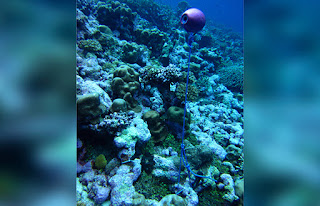Great Barrier Reef Recovery Signs

Making a Comeback Source: Stock Photo of Great Barrier Reef $40 Billion Natural Wonder The Great Barrier Reef is the longest coral reef in the world. It stretches 1,430 miles off the coast of Queensland, Australia. Scientists just reported that the reef is showing signs of a comeback after a large coral die-off. The reef is valued by Deloitte at more than $40 billion. It supports tens of thousands of jobs, pumps billions of dollars a year into the Australian economy and is one of the world's most beautiful natural treasures. It's the 1st coral reef to be awarded UNESCO World Heritage status. Reef 30% Damaged or Destroyed in 2016 There were dire predictions for the reef in 2016 and 2017 because of massive coral bleaching. The bleaching is caused by rising temperatures or poor water quality. At lease 30% of the reef was damaged or destroyed in 2016 alone. But Australia's Reef and Rainforest Research Center now reports signs the reef is recovering. Signs of











